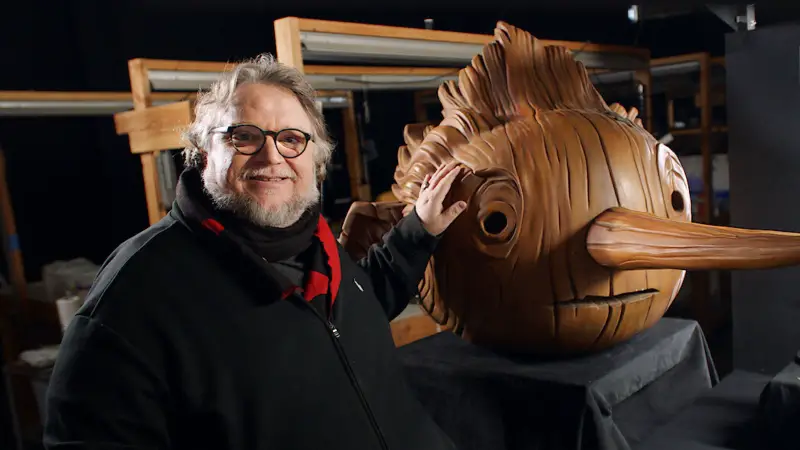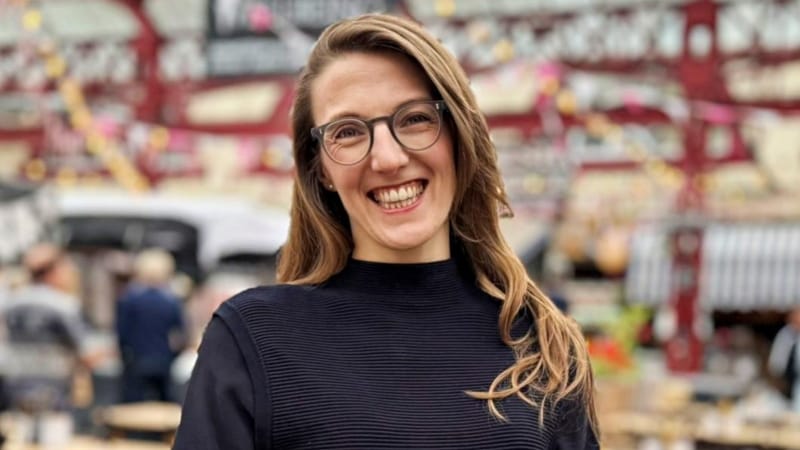Tucked away in a leafy corner of Altrincham, a hundred-plus animators, puppet-makers, sculptors and other creatives are busily crafting the stars of some of our best-loved films and TV shows.
It’s the home of Mackinnon & Saunders, set up over 30 years ago by stop frame visionaries Ian Mackinnon and Peter Saunders, and the team behind everything from Bob the Builder and Twirlywoos to Corpse Bride and Mars Attacks!.
Their latest film, the Guillermo del Toro-directed Pinocchio, had already won a BAFTA and Golden Globe and last night it topped off awards season by winning Best Animated Feature at the Oscars.
David Prior recently took a trip down to their Seamons Road studio to talk about the company’s incredible global success.
ALTRINCHAM TODAY: So how did you get into business together in the first place?
PETER SAUNDERS: We’d worked together at Cosgrove Hall (animation company) in Chorlton but in the early 90s, the parent company lost the franchise to broadcast in London. They let go of Cosgrove Hall because they could no longer control the broadcast schedules. Most of the staff were laid off, myself included, and it was at that point that we decided to set up a company together.
IAN MACKINNON: We started off with two or three of us and then there were four or five. Then Mars Attacks! happened and we grew to 45-50 people. We viewed about 100 buildings around south Manchester and the only one that I didn’t spot was the one that was on my doorstep. That was in 1996.
AT: You were behind the incredible puppets that star in Netflix’s adaptation of Pinocchio. Can you give us some idea of how you work on a project like this?
PS: It generally all starts with a meeting with the director or the art director, and then that’s followed up by designs being done of the characters. Some of those designs can be very, very sketchy, and others can be fully realised.
Quite often, our sculptors will roughly flesh out five or six of the characters in plasticine so that the director can see his emerging cast and work out what their relationship is. When you do it in 3D, something weird happens with the volume of character. So with Mr Fox and Mrs Fox from Fantastic Mr Fox, the original Mrs Fox was too imposing next to Mr Fox, so I had to scale it down. Sometimes it works in reverse, sometimes a character is too small and it looks too insignificant given their role in the film.
It’s only once that balance is right that you then go on and do your master sculpts. Then it’s a long process of taking the finished sculpt and making a series of moulds of the head, hands, legs and body, and it becomes like a kit. The head may be cast in silicone, the body may be cast in foam latex, and the shoes may be made out of leather.
The hope is, once all these separate elements have been made in their own constituent materials, it all fits back together and you’ve got the same character that you started off with. And that goes for the costume as well.

AT: Do you actually do the animation bit as well?
IM: Sometimes we’re just literally brought on to do some design work. Sometimes we do the entire puppet build. On Pinocchio we were doing the principal cast – Geppetto, Pinocchio and Volpe – and then a team would work on them in Portland. On some of the TV shows like Postman Pat or Twirlywoos, we will do all the animation here in Altrincham as well.
AT: How many people might be working here on a project at any one time?
PS: At the moment we’ve got about 110 people here which is big for us. Normally we are around about the 30 mark and in the pandemic we were even less than that. Most of the staff are freelance so when a project finishes they move on to something else. It can like a rollercoaster – super busy and then quiet.
AT: What was it like seeing Pinocchio on the big screen for the first time?
PS: It was epic. We were first involved with the project in 2008 but it took a few years to actually get the green light. It was a delight to work on and we went to see the premiere at the London Film Festival in November. It was very strange. When you’ve been associated with a project for so long, it is quite a daunting experience. To suddenly see it condensed down into two hours, no matter how good or bad it is, is quite a shocking experience.
IM: It’s a real credit to Netflix for giving the film a green light and seeing the potential in it, because so many studios had talked to Guillermo about it, and then said yes, and then no, and then passed on it. They kept saying the script was too dark.
It is a film for people of all ages. Guillermo has always said that this is a film that children can watch with family because it deals with quite a lot of sensitive issues. The feedback we’ve had from people who’ve watched it with young children is that they’ve been quite moved by it.
AT: What are you working on next?
IM: We’ve got two shows in production at the moment, a mix of live action and stop motion. One of them is a new show called BooSnoo! for Sky Kids. It’s a very calming show and it follows the journey of a little red ball. It’s quite captivating.
AT: Are you committed to staying in Altrincham for the foreseeable future?
PS: We love Altincham, we love the building and we love the environment we’re in. We’ve got the canal at the bottom of the car park, and you can literally go over the bridge and you’re into beautiful countryside. If we were in London, we would be in a tiny little shed in the back of Peckham or somewhere if we were lucky. Here, we’ve got offices and workshops and across the way on Atlantic Street there are two industrial units which we use for studios.
What has been the game-changer for us is digital technology. It’s allowed the work to come to Altrincham rather than Altrincham go to the work. It was different when we worked on Mars Attacks! – I stayed in Chorlton as my wife had just had a baby but Ian went with the sculptors and set up a workshop in West Hollywood.

AT: Did John Squire from the Stone Roses really used to work here?
PS: Not work here, but John Squire came to us when he was a teenager and brought in a beautiful little model shed that he had made out of Kellogg’s cornflake packets and bits of balsa wood. I said I would get him a job, but I think two or three years later he set up the Stone Roses and never looked back. He’s a man of many talents, John.
AT: Pinocchio really seems to have captured the imagination – why do you think that is?
PS: Guillermo showed us this photograph of an 18-foot high Pinocchio that had been built in a small village in Ecuador. They just did it, which was amazing. But we’ve also had people get in touch who we haven’t heard from for donkey’s years saying how much the film had touched a nerve.
IM: It was the global number one film on Netflix for a couple of weeks. The other day my mum phoned up and said her 94-year-old neighbour Les had travelled from Warrington to Manchester city centre to watch a 3D version of it at the cinema. I can’t imagine anything else we’ve ever worked on prompting that reaction.









